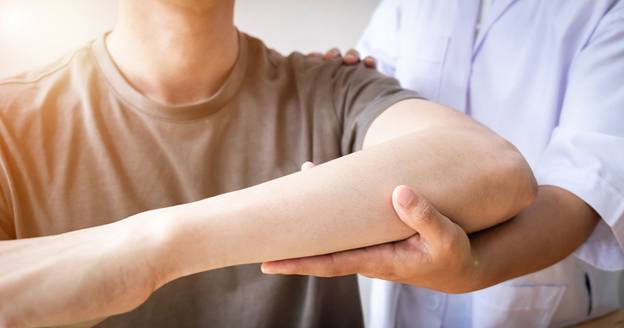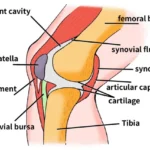Finding the right physical therapist (PT) for your arm injury is crucial to ensure effective recovery and rehabilitation. With various specializations, treatment approaches, and personal styles, it’s essential to consider several factors when selecting a therapist. This article will guide you through the process of choosing the right physical therapist to help you regain strength and mobility in your arm.
Understanding Physical Therapy
Physical therapy is a treatment approach that helps patients recover from injuries, manage pain, and improve function through various exercises and modalities. For arm injuries, physical therapists utilize specialized techniques to strengthen muscles, enhance mobility, and reduce pain.
Factors to Consider When Choosing a Physical Therapist
Specialization
- Look for a physical therapist who specializes in treating arm injuries. Some may focus on specific areas like sports injuries, post-surgical rehabilitation, or chronic pain management. Ensure their expertise aligns with your specific condition.
Credentials and Experience
- Verify the therapist’s credentials. They should have a Doctor of Physical Therapy (DPT) degree and be licensed to practice in your state. Experience is also vital; ask how long they have been treating arm injuries and if they have dealt with cases similar to yours.
Treatment Techniques
- Different therapists may use varying approaches, such as manual therapy, therapeutic exercises, ultrasound, or electrical stimulation. Research the techniques they use and see if they align with your preferences or comfort levels.
Location and Availability
- Consider the convenience of the therapist’s location. Proximity can significantly affect your ability to attend regular appointments. Also, check their availability to ensure they can accommodate your schedule.
Reputation and Reviews
- Look for reviews and testimonials from previous patients. Online platforms, social media, or word-of-mouth recommendations can provide valuable insights into the therapist’s effectiveness and approach.
Communication Style
- The right therapist should communicate clearly and effectively. They should explain treatment plans, answer your questions, and listen to your concerns. A good rapport can enhance your recovery experience.
Insurance and Payment Options
- Check whether the physical therapist accepts your insurance plan. Understanding the cost and payment options upfront can help avoid any financial surprises during your treatment.
Initial Consultation
- Many therapists offer an initial consultation, which is an excellent opportunity to assess their approach and compatibility. Use this time to discuss your injury, treatment goals, and any concerns you may have.
The Rehabilitation Process
Once you’ve selected a physical therapist, the rehabilitation process typically involves several steps:
Assessment and Evaluation
- The therapist will conduct a thorough assessment of your arm injury, including medical history, physical examination, and functional assessments. This evaluation helps them develop a personalized treatment plan.
Goal Setting
- Together with your therapist, establish clear, achievable goals for your rehabilitation. These could range from pain relief to improving strength, flexibility, or overall function in the affected arm.
Treatment Plan Implementation
- The therapist will implement the treatment plan, incorporating various techniques tailored to your specific needs. Regular sessions will focus on exercises, manual therapy, and other modalities to facilitate recovery.
Progress Monitoring
- Throughout your rehabilitation, the therapist will monitor your progress, adjusting the treatment plan as necessary. Regular reassessments will ensure you are moving towards your goals effectively.
Education and Home Exercise
- Your therapist will educate you about your injury, recovery strategies, and exercises to perform at home. Adhering to a home exercise program is vital for optimal recovery.
Frequently Asked Questions
How do I know if I need physical therapy for my arm injury?
If you are experiencing persistent pain, limited mobility, or difficulty performing daily activities after an injury, physical therapy can help. Consulting with a healthcare provider can guide you in determining if PT is appropriate.
How long will I need physical therapy for my arm injury?
The duration of physical therapy varies based on the severity of the injury and individual progress. Some patients may only need a few sessions, while others may require several weeks or months of treatment.
What should I wear to physical therapy sessions?
Wear comfortable, loose-fitting clothing that allows for easy movement. Depending on your arm injury, your therapist may also recommend specific gear, such as a brace or sleeve.
Will my insurance cover physical therapy?
Many insurance plans cover physical therapy, but it’s essential to check with your provider regarding specific coverage details, including co-pays and session limits.
What if I feel pain during therapy?
While some discomfort may be expected during rehabilitation, sharp or severe pain is not normal. Communicate with your therapist about any pain you experience, as they may need to adjust your treatment plan.
Conclusion
Choosing the right physical therapist for your arm injury is a crucial step in your recovery journey. By considering factors such as specialization, experience, treatment techniques, and communication styles, you can find a therapist who meets your needs. Engaging in physical therapy not only helps in managing pain but also facilitates a return to full function and improves your overall quality of life.





